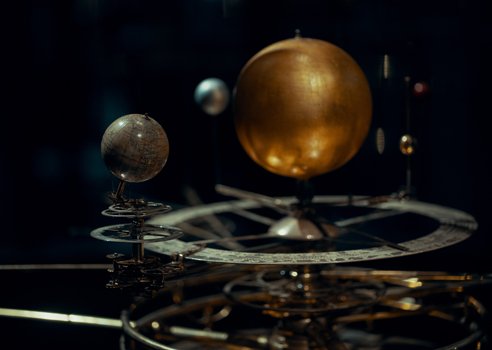Reading time: Less than 1 minute
Increase your vocabulary and you’ll make your writing much more precise. That’s why I provide a word of the week. Today’s word: orrery…
When my children were young, a dad in our social circle decided to acquaint all our young kids with the concept of space and planets.
In those days (this was before Pluto was downgraded), this meant rounding up nine kids to represent each of the planets plus a tenth one for the sun. The dad had calculated the size of each planet and their distance from the sun.
He gave each child an object representing the size of their respective planet (ranging from a marble to a volleyball, as I recall, although I may be wrong about the sizes.) And he spread them out across a very large (two-city-block x two-city-block-sized) field. As I remember there was still one planet that was too far away for the distancing to be entirely accurate. But the kids got the idea. It was impressive.
Even though I didn’t know it at the time, in a sense we were creating a live orrery. I encountered this word in the excellent book The Porpoise by Mark Haddon, who is also author of The Curious Incident of the Dog in the Nighttime.
Here is how Haddon used the term:
There is an orrery on the central table over which Mesomedes would have swooned.
The word was new to me and when I looked it up, I discovered it meant a mechanical model of the solar system, or of just the sun, earth, and moon, used to represent their relative positions and motions. (See photo at the top of this post.)
The device was invented in roughly 1704 by English clockmaker George Graham (1673-1751) and constructed by instrument maker John Rowley. Graham gave a copy to his patron, Charles Boyle (1674-1731), 4th Earl of Orrery (Cork) and named it in his honour.


